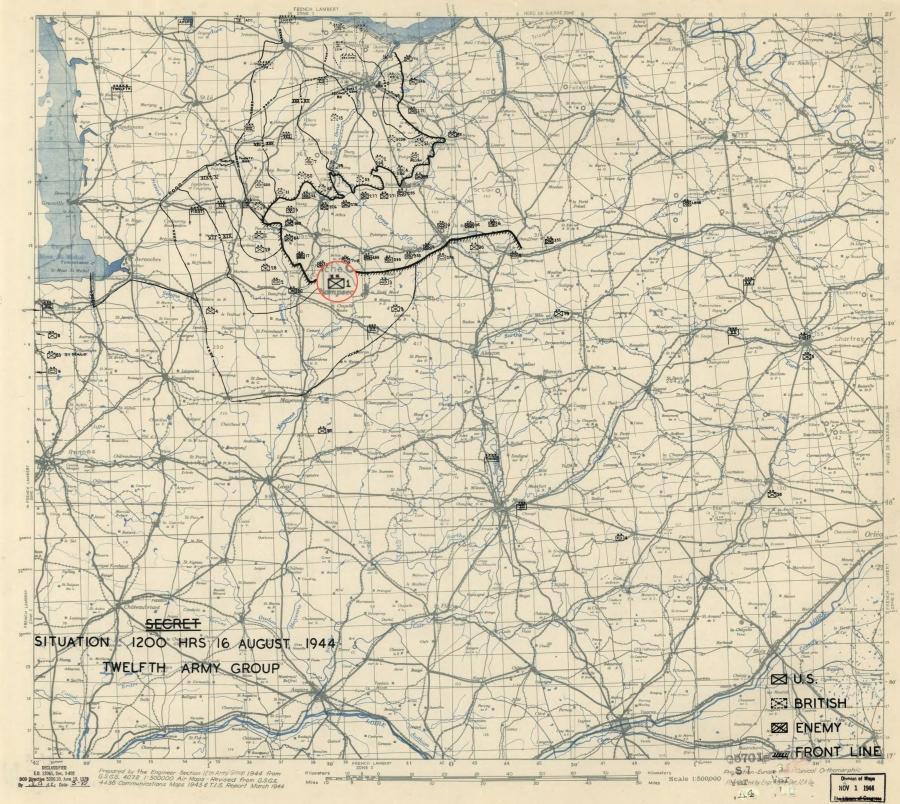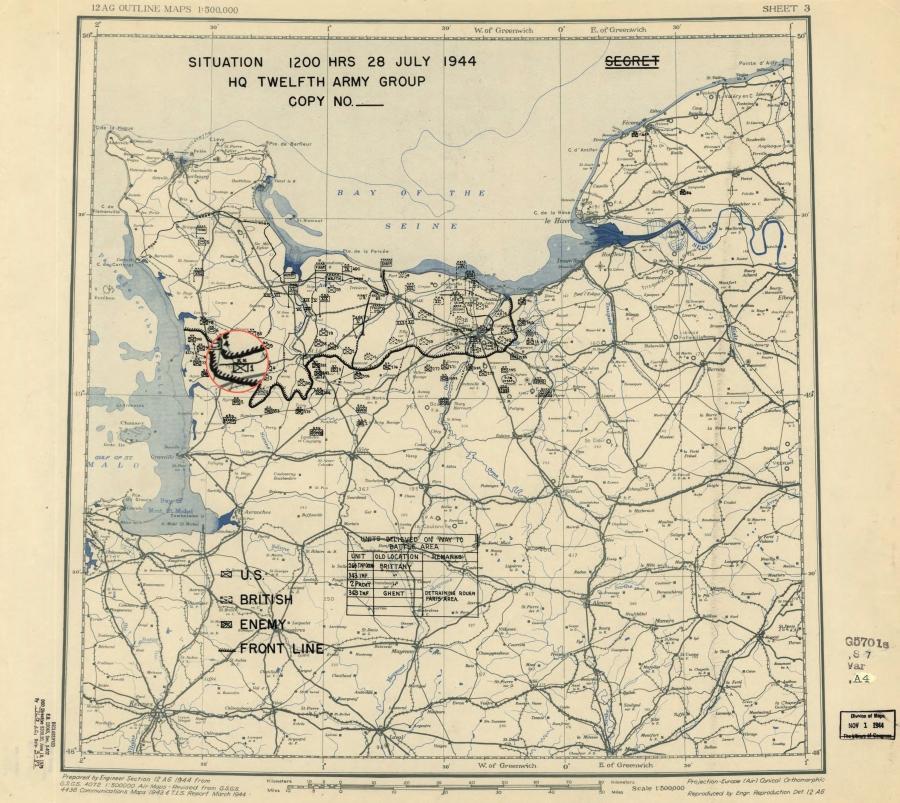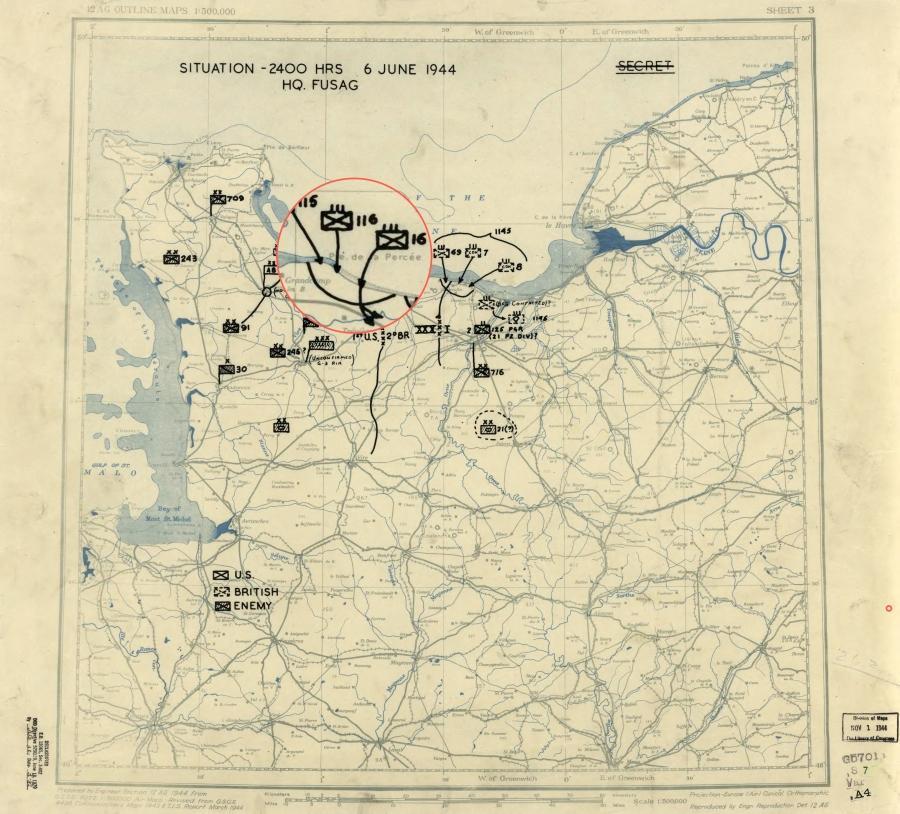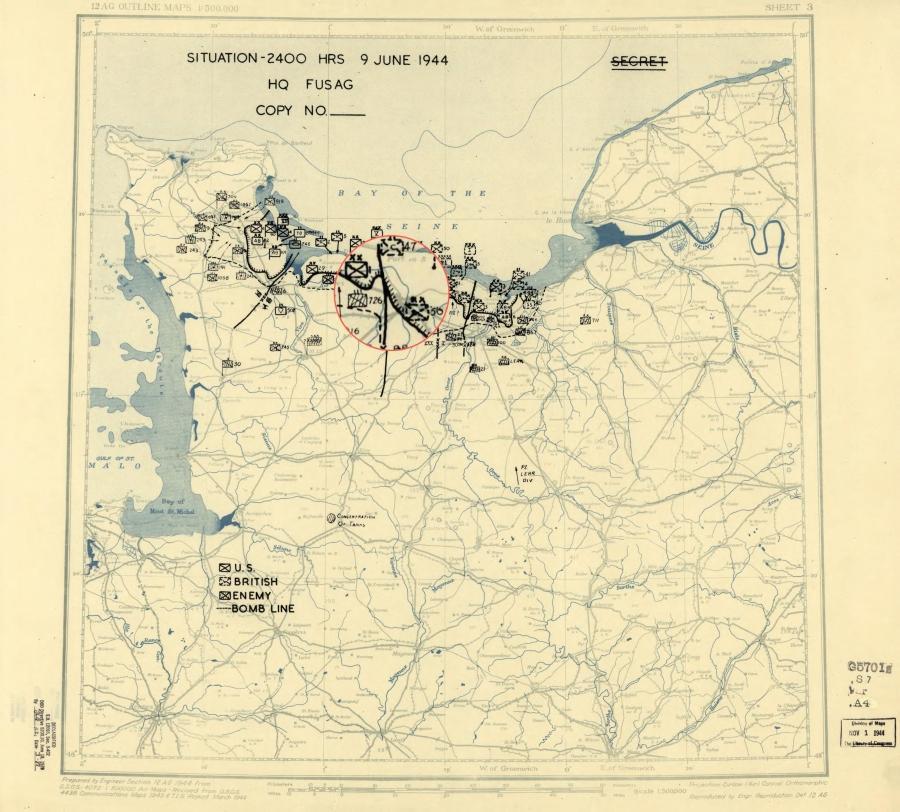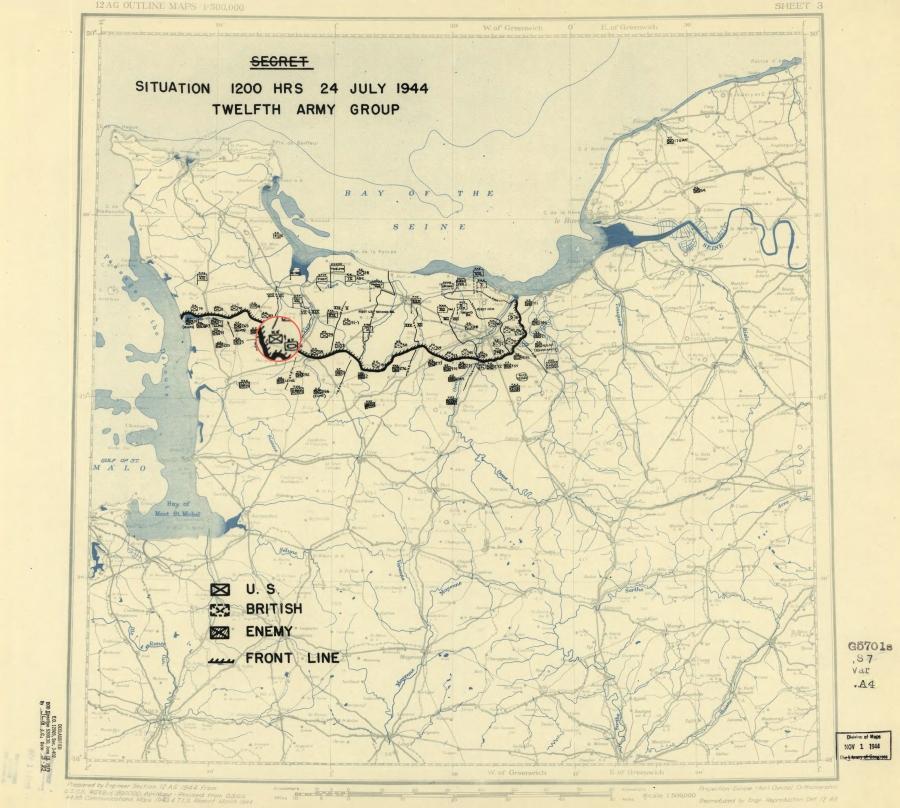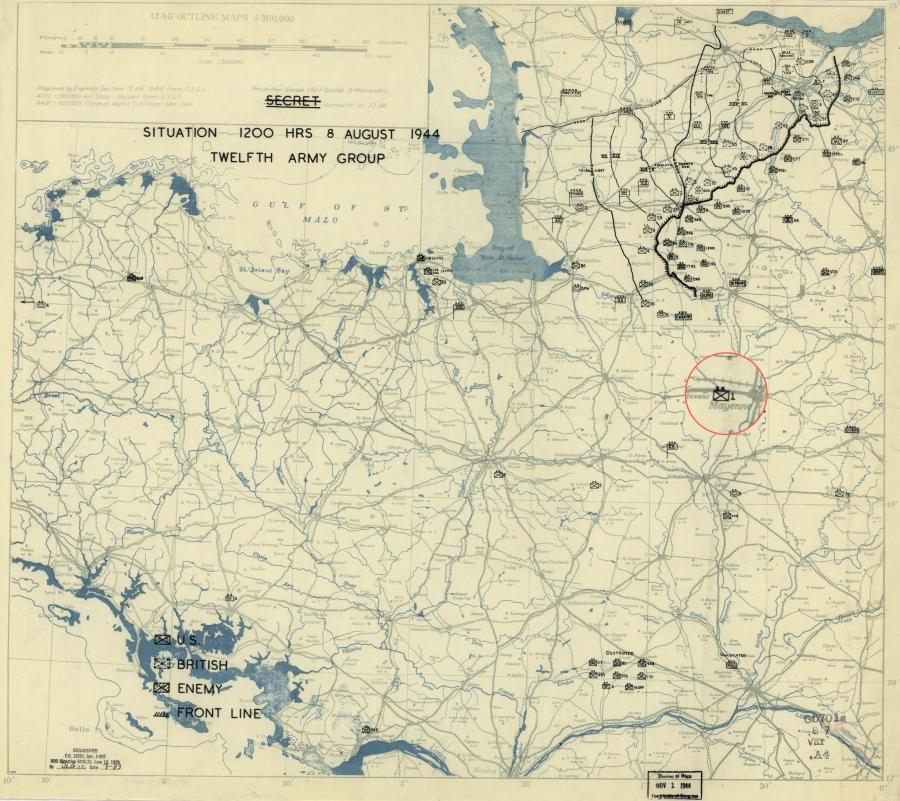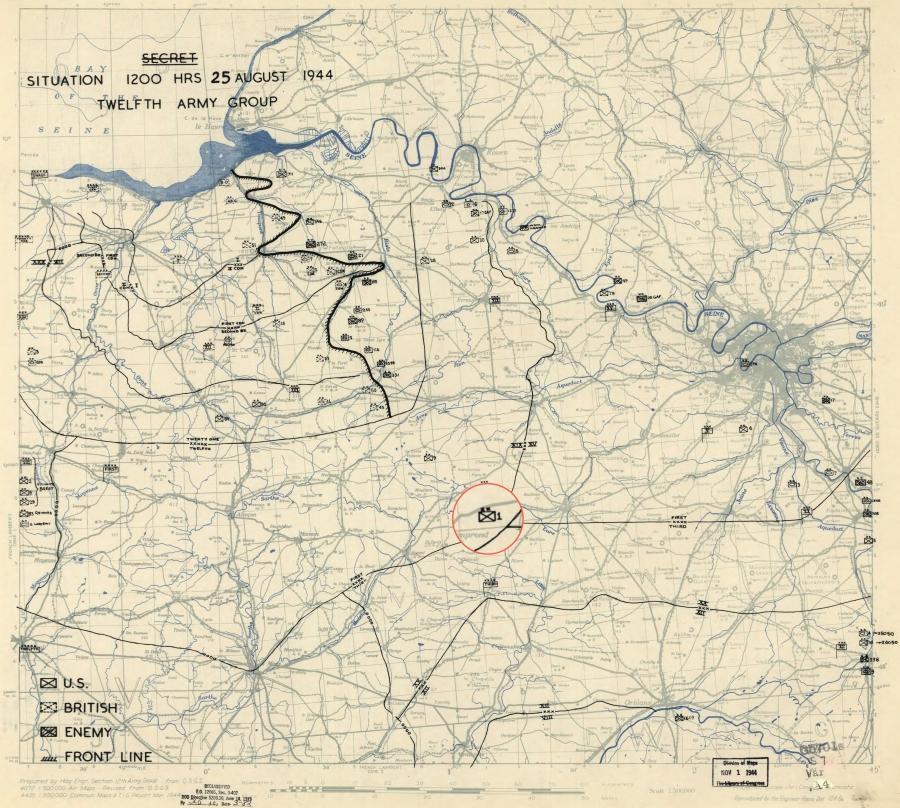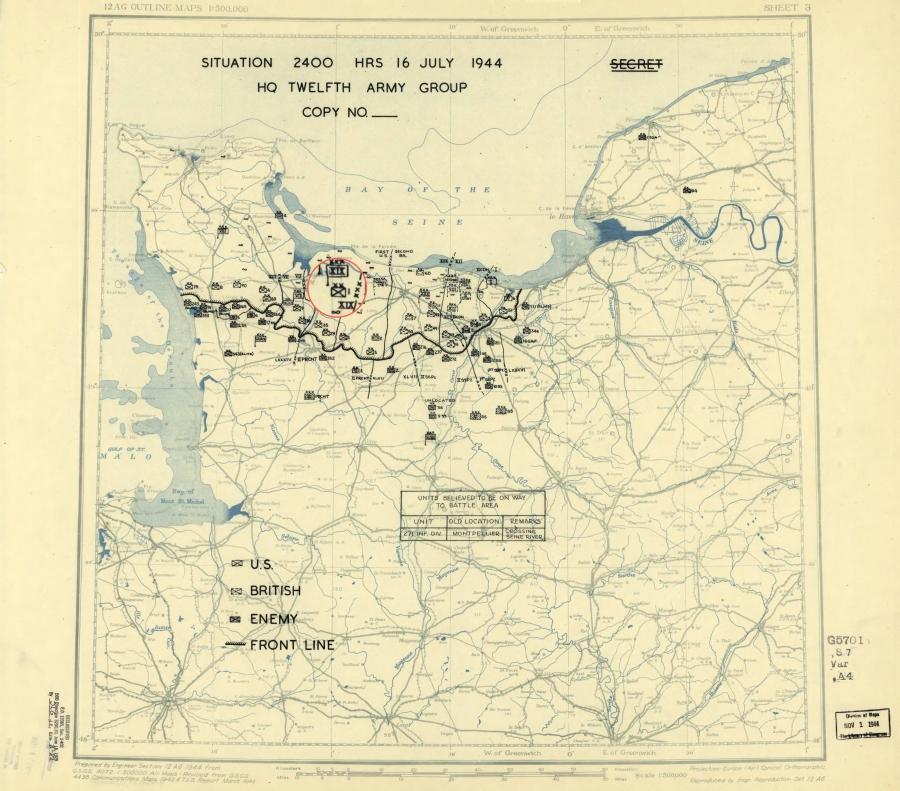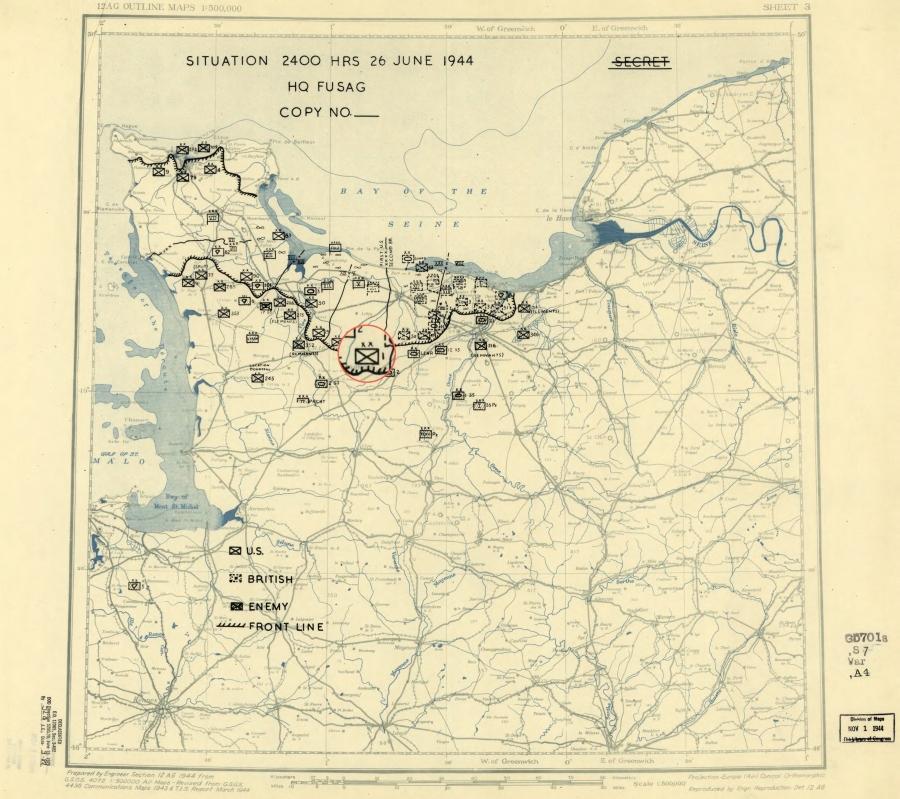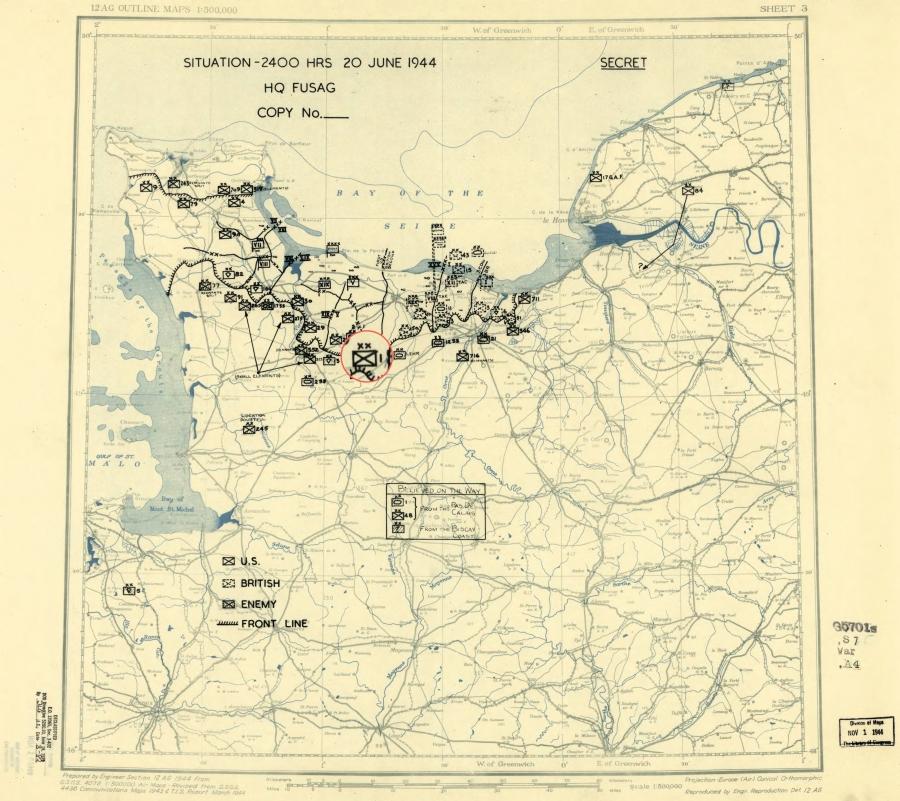.png)
The oldest and probably the best known of all American in-fantry divisions is the 1st, sometimes nicknamed the "Fighting First," often called by its proud members simply "The First,"and most recently known as "The Red One." Germans who had seen the red "1" on 1st Division shoulders in North Africa,Sicily, and all over the European continent gave the Division that name, and the Ist's soldiers have since used it themselves. A German, incidentally, involuntarily provided the 1st with its shoulder patch.
According to legend, the original red "1" was improvised from the cap of an enemy soldier who had been killed by a 1st Division Doughboy during World War I, when the Division earned the right to proclaim itself first in France, first to fire on the enemy, first to suffer casualties, first to take prisoners, first to stage a major offensive, first to enter Germanyand-as an equally notable exception-last to come home.
The Fighting First got off to an early start in this war when, after amphibious training in the States and in England, it surged ashore at Oran on D-day of the North African invasion, November 8, 1942. It fought through Tunisia, taking heavy casualties at Kasserine Pass, but holding its ground against the enemy and living up to its motto, "No mission too difficult; no sacrifice too great, as it hammered away at the vaunted Afrika Korpsat Gafsa, El Guettar, Tebessa, and other battlefields. The Ist's second D-day was at Gela, Sicily.
In 37 days, the Division took 18 cities, inching its way up cliffs and along tortuous mountain trails, and distinguishing itself by smashing the Hermann Goering Division and taking the important objectiveof Troina, where the 16th Infantry Regiment, which dates back to 1798, made a gallant frontal attack coordinated with a flank assault by the 18th Infantry, a comparatively new outfit dating back only to 1812. After Sicily, the 1st sailed back to England to get ready for the invasion of the Continent.
On D-day in Normandy, June 6,1944, it went ashore at Omaha Beach, the most strongly forti-fied section of the coast. Some of its units suffered 80 percent casualties in the first bloody hour of fighting, but the Division hung on to the beachhead, forced its way inland by sheer determination, destroyed a whole German division that stood in its way, and prompted Ernie Pyle to write, later, "Now that itis over it seems to me a pure miracle that we ever took the beach at all." For their heroism at Omaha, 740 men of a single battalion of the 16th Infantry were awarded the Bronze Star. In the July breakthrough out of Normandy at St. Lo, the 1st swung to the west, took Marigny, and then trapped 30,000 Germans near Coutances.
In August it moved 300 miles in aweek to take Soissons, where in the last war the 1st had suffered 9,000 casualties in four days. (Major General Clarence R.Huebner, who led the Division at the time, had been a battalion commander in the 1st at Soissons in 1918.) The Division continued to Aachen, fighting through the city street by street and house by house after the besieged defenders refused to surrender. Then the 1st found itself in the thick of the Hiirtgen Forest fighting.
Companies E and F of the 26th Infantry Regiment were completely wiped out, but replacements for the lostunits, fighting from foxholes against a heavy tank-infantry attack, avenged their comrades by killing 1,200 Germans in three days. During Rundstedt's counteroffensive in the Ardennes, the 1st successfully attacked in the St. Vith-Malmedy sector, drove on to the Rhine, and, when the 9th Armored Division captured intact the bridge at Remagen, swept across and raced deep into Germany. By V-E Day, all three regiments of the Division hadbeen cited and several smaller units had earned additional honors. The men who wore the Red One-had good cause forthinking that the 1st was still first.
Page 1 of 2


